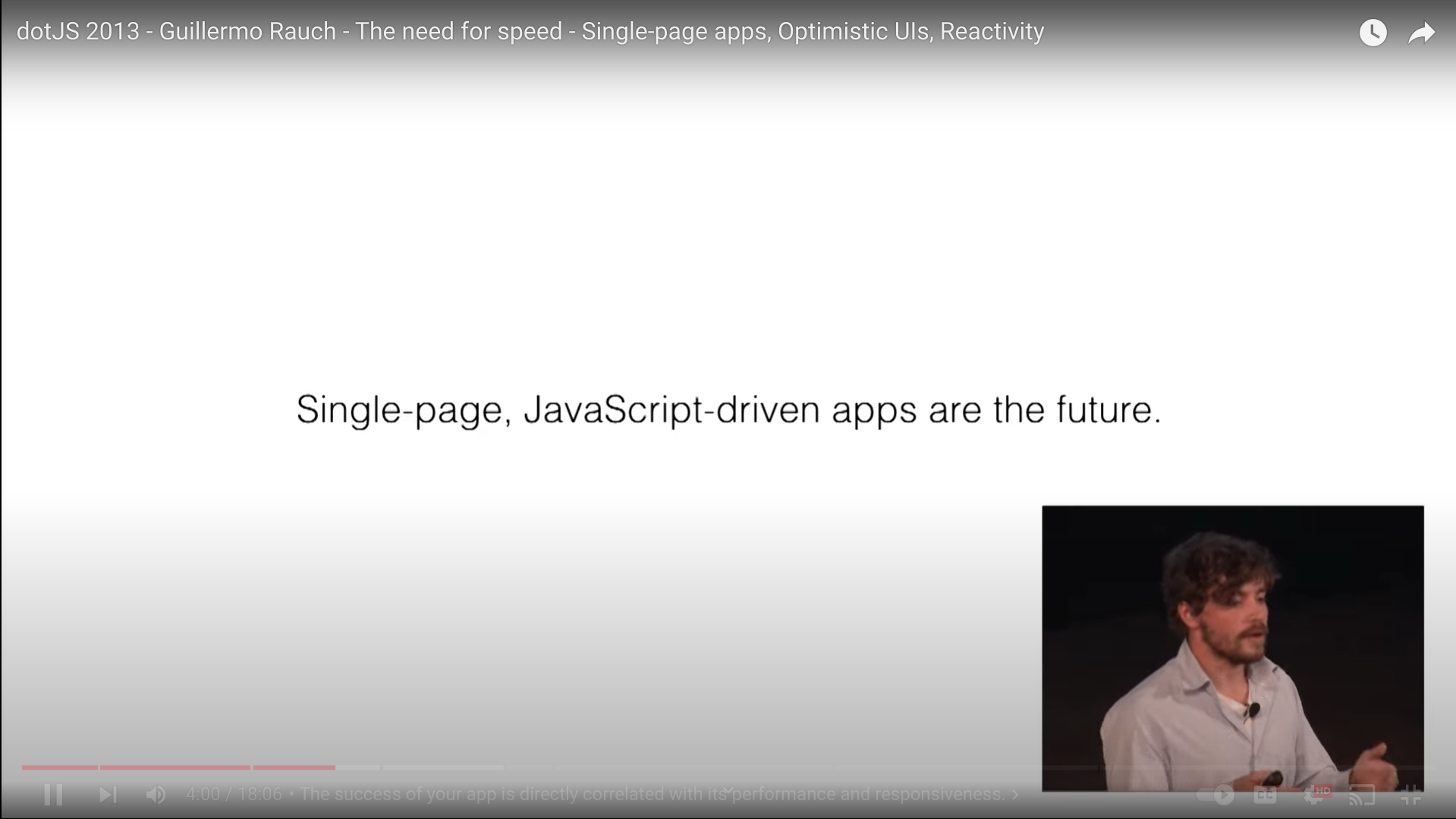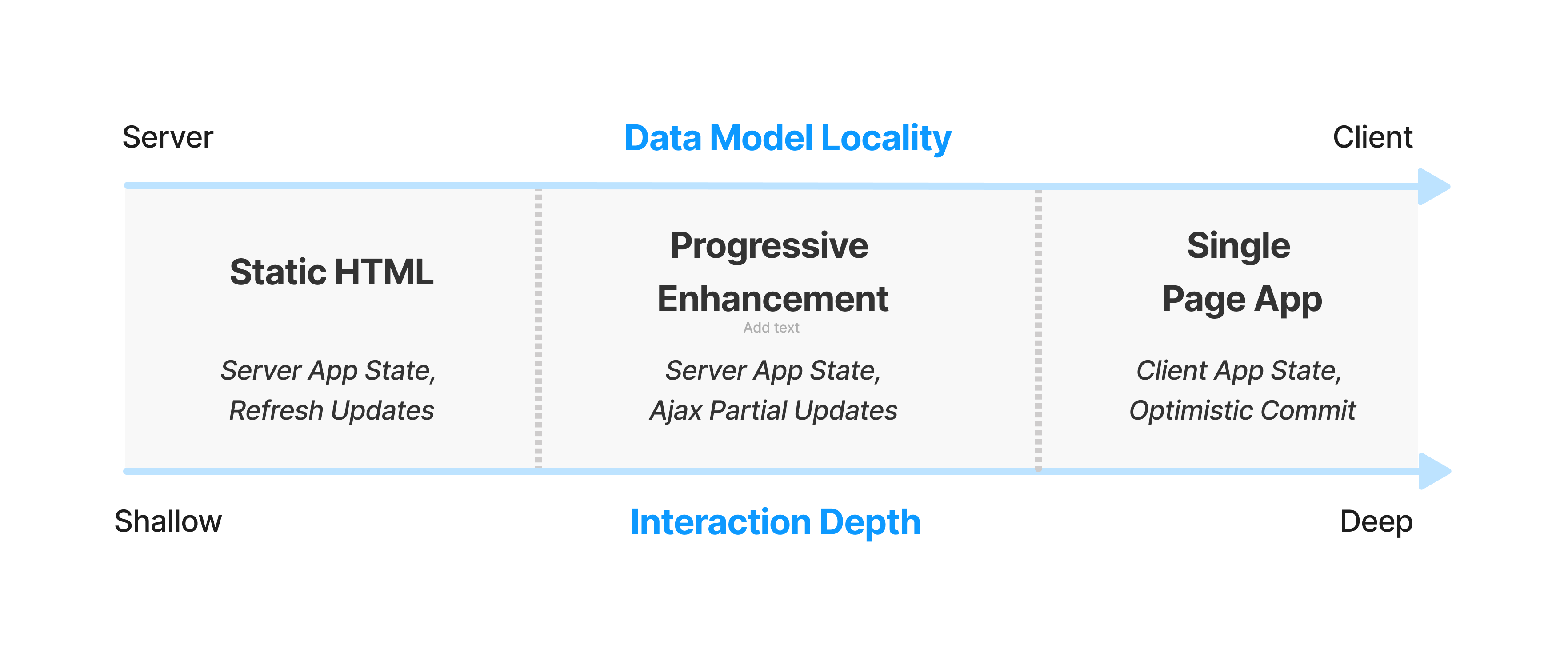Safari 16.4 Is An Admission
If you're a web developer not living under a rock, you probably saw last week's big Safari 16.4 reveal. There's much to cheer, but we need to talk about why this mega-release is happening now, and what it means for the future.
But first, the list!
WebKit's Roaring Twenties #
Apple's summary combines dozens of minor fixes with several big-ticket items. Here's an overview of the most notable features, prefixed with the year they shipped in Chromium:
- : Web Push for iOS (but only for installed PWAs)
- : PWA Badging API (for unread counts) and
idsupport (making updates smoother) - : PWA installation for third-party browsers (but not to parity with "Smart Banners")
- A bevy of Web Components features, many of which Apple had held up in standards bodies for years[1], including:
- : Constructable Stylesheets (important for performance)
- : Form participation and default ARIA role
- : Declarative Shadow DOM for "SSR"
- Myriad small CSS improvements and animation fixes, but also:
- :
<iframe>lazy loading - :
Clear-Site-Datafor Service Worker use at scale - : Web Codecs for video (but not audio)
- : WASM SIMD for better ML and games
- : Compression Streams
- : Reporting API (for learning about crashes and metrics reporting)
- : Screen Orientation & Screen Wake Lock APIs (critical for games)
- : Offscreen Canvas (but only 2D, which isn't what folks really need)
- Critical usability and quality fixes for WebRTC
A number of improvements look promising, but remain exclusive to macOS and iPadOS:
- Fullscreen API fixes
- AVIF and AV1 support
The lack of iOS support for Fullscreen API on <canvas> elements continues to harm game makers; likewise, the lack of AVIF and AV1 holds back media and streaming businesses.
Regardless, Safari 16.4 is astonishingly dense with delayed features, inadvertantly emphasising just how far behind WebKit has remained for many years and how effective the Blink Launch Process has been in allowing Chromium to ship responsibly while consensus was witheld in standards by Apple.
The requirements of that process accelerated Apple's catch-up implementations by mandating proof of developer enthusiasm for features, extensive test suites, and accurate specifications. This collateral put the catch-up process on rails for Apple.
The intentional, responsible leadership of Blink was no accident, but to see it rewarded so definitively is gratifying.
The size of the release was expected in some corners, owing to the torrent of WebKit blog posts over the last few weeks:
- : Web Share changes
- : Form participation for Web Components
- : CSS Nesting (not enabled for Beta)
- : Declarative Shadow DOM
- : User Activation API changes
- : Web Push API for iOS
This is a lot, particularly considering that Apple has upped the pace of new releases to once every eight weeks (or thereabouts) over the past year and a half.
Good Things Come In Sixes #
Leading browsers moved to 6-week update cadence by 2011 at the latest, routinely delivering fixes at a quick clip. It took another decade for Apple to finally adopt modern browser engineering and deployment practices.
Starting in September 2021, Safari moved to an eight-week cadence. This is a sea change all its own.
Before Safari 15, Apple only delivered two substantial releases per year, a pattern that had been stable since 2016:
- New features were teased at WWDC in the early summer
- They landed in the Fall alongside a new iOS version
- A second set of small features trickled out the next Spring
For a decade, two releases per year meant that progress on WebKit bugs was a roulette that developers lost by default.
In even leaner years (2012-2015), a single Fall release was all we could expect. This excruciating cadence affected Safari along with every other iOS browser forced to put its badge on Apple's sub-par product.
Contrast Apple's manufactured scarcity around bug fix information with the open bug tracking and reliable candecne of delivery from leading browsers. Cupertino manages the actual work of Safari engineers through an Apple-internal system ("Radar"), making public bug reports a sort of parallel track. Once an issue is imported to a private Radar bug it's more likely to get developer attention, but this also obscures progress from view.
This lack of transparency is by design.
It provides Apple deniability while simultaneously setting low expectations, which are easier to meet. Developers facing showstopping bugs end up in a bind. Without competitive recourse, they can't even recommend a different browser bucause they'll all be at least as broken as Safari.
Given the dire state of WebKit, and the challenges contributors face helping to plug the gaps, these heartbreaks have induced a learned helplessness in much of the web community. So little improved, for so long, that some assumed it never would.
But here we are, with six releases a year and WebKit accelerating the pace at which it's closing the (large) gap.
What Changed? #
Many big-ticket items are missing from this release — iOS fullscreen API for <canvas>, Paint Worklets, true PWA installation APIs for competing browsers, Offscreen Canvas for WebGL, Device APIs (if only for installed web apps), etc. — but the pace is now blistering.
This is the power of just the threat of competition.
Apple's laywers have offered claims in court and in regulatory filings defending App Store rapaciousness because, in their telling, iOS browsers provide an alternative. If developers don't like the generous offer to take only 30% of revenue, there's always Cupertino's highly capable browser to fall back on.
The only problem is that regulators ask follow-up questions like "is it?" and "what do developers think?"
Which they did.
TL;DR: it wasn't, and developers had lots to say.
This is, as they say, a bad look.
And so Apple hedged, slowly at first, but ever faster as 2021 bled into 2022 and the momentum of additional staffing began to pay dividends.
Headcount Is Destiny #
Apple had the resources needed to build a world-beating browser for more than a decade. The choice to ship a slower, less secure, less capable engine was precisely that: a choice.
Starting in 2021, Apple made a different choice, opening up dozens of Safari team positions. From 2023 perspective of pervasive tech layoffs, this might look like the same exuberant hiring Apple's competitors recently engaged in, but recall Cupertino had maintained extreme discipline about Safari staffing for nearly two decades. Feast or famine, Safari wouldn't grow, and Apple wouldn't put significant new resourcing into WebKit, no matter how far it fell behind.
The decision to hire aggressively, including some "big gets" in standards-land, indicates more is afoot, and the reason isn't that Tim lost his cool. No, this is a strategy shift. New problems needed new (old) solutions.
Apple undoubtedly hopes that a less egregiously incompetent Safari will blunt the intensity of arguments for iOS engine choice. Combined with (previously winning) security scaremongering, reduced developer pressure might allow Cupertino to wriggle out of needing to compete worldwide, allowing it to ring-fence progress to markets too small to justify browser development resources (e.g., just the EU).
Increased investment also does double duty in the uncertain near future. In scenarios where Safari is exposed to real competition, a more capable engine provides fewer reasons for web developers to recommend other browsers. It takes time to board up the windows before a storm, and if competition is truly coming, this burst of energy looks like a belated attempt to batten the hatches.
It's critical to Apple that narrative discipline with both developers and regulators is maintained. Dilatory attempts at catch-up only work if developers tell each other that these changes are an inevitable outcome of Apple's long-standing commitment to the web (remember the first iPhone!?!). An easily distracted tech press will help spread the idea that this was always part of the plan; nobody is making Cupertino do anything it doesn't want to do, nevermind the frantic regulatory filings and legal briefings.
But what if developers see behind the veil? What if they begin to reflect and internalise Apple's abandonment of web apps after iOS 1.0 as an exercise of market power that held the web back for more than a decade?
That might lead developers to demand competition. Apple might not be able to ring-fence browser choice to a few geographies. The web might threaten Cupertino's ability to extract rents in precisely the way Apple represented in court that it already does.
Early Innings #
Rumours of engine ports are afoot. The plain language of the EU's DMA is set to allow true browser choice on iOS. But the regulatory landscape is not at all settled. Apple might still prevent progress from spreading. It might yet sue its way to curtailing the potential size and scope of the market that will allow for the web to actually compete, and if it succeeds in that, no amount of fast catch-up in the next few quarters will pose a true threat to native.
Consider the omissions:
- PWA installation prompting
- Fullscreen for
<canvas> - Real Offscreen Canvas
- Improved codecs
- Web Transport
- WebGPU
- Device APIs
Depending on the class of app, any of these can be a deal-breaker, and if Apple isn't facing ongoing, effective competition it can just reassign headcount to other, "more critical" projects when the threat blows over. It wouldn't be the first time.
So, this isn't done. Not by a long shot.
Safari 16.4 is an admission that competition is effective and that Apple is spooked, but it isn't an answer. Only genuine browser choice will ensure the taps stay open.
Apple's standards engineers have a long and inglorious history of stalling tactics in standards bodies to delay progress on important APIs, like Declarative Shadow DOM (DSD).
The idea behind DSD was not new, and the intensity of developer demand had only increased since Dimitri's 2015 sketch. A 2017 attempt to revive it was shot down in 2018 by Apple engineers without evidence or data.
Throughout this period, Apple would engage sparsely in conversations, sometimes only weighing in at biannual face-to-face meetings. It was gobsmacking to watch them argue that features were unnecessary directly to the developers in the room who were personally telling them otherwise. This was disheartening because a key goal of any proposal was to gain support from iOS. In a world where nobody else could ship-and-let-live, and where Mozilla could not muster an opinion (it did not ship Web Components until late 2018), any whiff of disinterest from Apple was sufficient to kill progress.
The phrase "stop-energy" is often misused, but the dampening effect of Apple on the progress of Web Components after 2015-2016's burst of V1 design energy was palpable. After that, the only Web Components features that launched in leading-edge browsers were those that an engineer and PM were willing to accept could only reach part of the developer base.
I cannot stress enough how effectively this slowed progress on Web Components. The pantomime of regular face-to-face meetings continued, but Apple just stopped shipping. What had been a grudging willingness to engage on new features became a stalemate.
But needs must.
In early 2020, after months of background conversations and research, Mason Freed posted a new set of design alternatives, which included extensive performance research. The conclusion was overwhelming: not only was Declarative Shadow DOM now in heavy demand by the community, but it would also make websites much faster.
The proposal looked shockingly like those sketched in years past. In a world where
<template>existed and Shadow DOM V1 had shipped, the design space for Declarative Shadow DOM alternatives was not large; we just needed to pick one.An updated proposal was presented to the Web Components Community Group in March 2020; Apple objected on spurious grounds, offering no constructive counter.[2]
Residual questions revolved around security implications of changing parser behaviour, but these were also straightforward. The first draft of Mason's Explainer even calls out why the proposal is less invasive than a whole new element.
Recall that Web Components and the
<template>element themselves were large parser behaviour changes; the semantics for<template>even required changes to the long-settled grammar of XML (long story, don't ask). A drumbeat of (and proposals for) new elements and attributes post-HTML5 also represent identical security risks, and yet we barrel forward with them. These have notably included<picture>,<portal>(proposed),<fencedframe>(proposed),<dialog>,<selectmenu>(proposed), and<img srcset>.The addition of
<template shadowroot="open">would, indeed, change parser behaviour, but not in ways that were unknowably large or unprecedented. Chromium's usage data, along with the HTTP Archive crawl HAR file corpus, provided ample evidence about the prevalence of patterns that might cause issues. None were detected.And yet, at TPAC 2020, Apple's representatives continued to press the line that large security issues remained. This was all considered at length. Google's security teams audited the colossal volume of user-generated content Google hosts for problems and did not find significant concerns. And yet, Apple continued to apply stop-energy.
The feature eventually shipped with heavy developer backing as part of Chromium 90 in April 2021 but without consensus. Apple persistently repeated objections that had already been answered with patient explication and evidence.
Cupertino is now implementing this same design, and Safari will support DSD soon.
This has not been the worst case of Apple deflection and delay — looking at you, Push Notifications — but serves as an exemplar of the high-stakes games that Apple (and, to a lesser extent, Mozilla) have forced problem solvers to play over their dozen years of engine disinvestment.
Even in Chromium, DSD was delayed by several quarters. Because of the Apple Browser Ban, cross-OS availability was further postponed by two years. The fact that Apple will ship DSD without changes and without counterproposals across the long arc of obstruction implies claims of caution were, at best, overstated.
The only folks to bring data to the party were Googlers and web developers. No new thing was learned through groundless objection. No new understanding was derived from the delay. Apple did no research about the supposed risks. It has yet to argue why it's safe now, but wasn't then.
So let's call it what it was: concern trolling.
Uncritical acceptance of the high-quality design it had long delayed is an admission, of sorts. It shows a ennui about meeting developer and user needs (until pressed), paired with great skill at deflection.
The playbook is simple:
- Use opaque standards processes to make it look like occasional attendance at a F2F meeting is the same thing as good-faith co-engineering.
- "Just ask questions" when overstretched or uninterested in the problem.
- Spread FUD about the security or privacy of a meticulously-vetted design.
- When all else fails, say you will formally object and then claim that others are "shipping whatever they want" and "not following standards" when they carefully launch a specced and tested design you were long consulted about, but withheld good faith engagement to improve.
The last step works because only insiders can distinguish between legitimate critiques and standards process jockeying. Hanging the first-mover risk around the neck of those working to solve problems is nearly cost-free when you can also prevent designs from moving forward in standards, paired with a market veto (thaks to anti-competitive shenanigans).
Play this dynamic out over dozens of features across a decade, and you'll better understand why Chromium participants get exercised about responsibility theatre by various Apple engineers. Understood in context, it decodes as delay and deflection from using standards bodies to help actually solve problems.
Cupertino has paid no price for deploying these smoke screens, thanks to the Apple Browser Ban and a lack of curiosity in the press. Without those shields, Apple engineers would have had to offer convincing arguments from data for why their positions were correct. Instead, they have whatabouted for over three years, only to suddenly implement proposals they recently opposed when the piercing gaze of regulators finally fell on WebKit.[3] ↩︎
The presence or absence of a counterproposal when objecting to a design is a primary indicator of seriousness within a standards discussion. All parties will have been able to examine proposals before any meeting, and in groups that operate by consensus, blocking objections are understood to be used sparingly by serious parties.
It's normal for disagreements to surface over proposed designs, but engaged and collaborative counter-parties will offer soft concerns – "we won't block on this, but we think it could be improved..." – or through the offer to bring a counterproposal. The benefits of a concrete counter are large. It demonstrates good faith in working to solve the problem and signals a willingness to ship the offered design. Threats to veto, or never implement a specific proposal, are just not done in the genteel world of web standards.
Over the past decade, making veto threats while offering neither data nor a counterproposal have become a hallmark of Apple's web standards footprint. It's a bad look, but it continues because nobody in those rooms wants to risk pissing off Cupertino. Your narrator considered a direct accounting of just the consequences of these tactics a potentially career-ending move; that's how serious the stakes are.
The true power of a monopoly in standards is silence — the ability to get away with things others blanch at because they fear you'll hold an even larger group of hostages next time. ↩︎
Apple has rolled out the same playbook in dozens of areas over the last decade, and we can learn a few things from this experience.
First, Apple corporate does not care about the web, no matter how much the individuals that work on WebKit (deeply) care. Cupertino's artificial bandwidth constraints on WebKit engineering ensured that it implements only when pressured.
That means that external pressure must be maintained. Cupertino must fear losing their market share for doing a lousy job. That's a feeling that hasn't been felt near the intersection of I-280 and CA Route 85 in a few years. For the web to deliver for users, gatekeepers must sleep poorly.
Lastly, Apple had the capacity and resources to deliver a richer web for a decade but simply declined. This was a choice — a question of will, not of design correctness or security or privacy.
Safari 16.4 is evidence, an admission that better was possible, and the delaying tactics were a sort of gaslighting. Apple disrespects the legitimate needs of web developers when allowed, so it must not be.
Lack of competition was the primary reason Apple feared no consequence for failing to deliver. Apple's protectionism towards Safari's participation-prize under-achievement hasn't withstood even the faintest whiff of future challengers, which should be an enduring lesson: no vendor must ever be allowed to deny true and effective browser competition. ↩︎



